From bedroom to bespoke bistro with Curtis
Hotel bedrooms are having to adapt to perform other functions apart from sleeping spaces. Andrew Reynolds, managing director of Leeds-based hotel bedroom furniture manufacturers Curtis, looks at the why and how for designers and manufacturers.
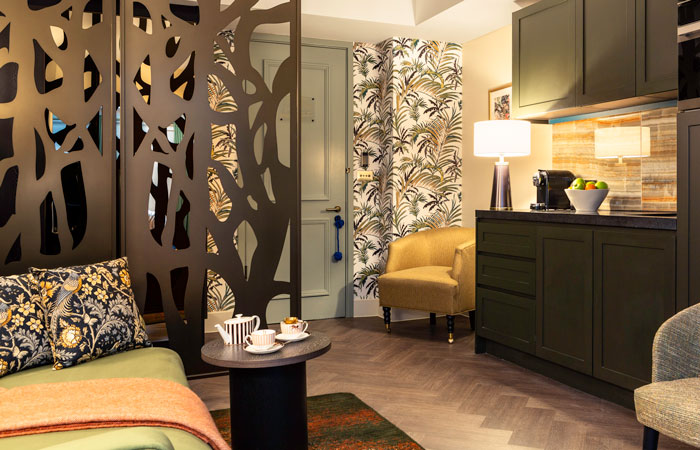
The Other House, London
Although the aparthotel concept has been growing exponentially since RoomZZZ opened their first site in the UK in 2006, it took the global pandemic to move it up an even higher gear.
Not that it needed it. Initially seen as a niche market with a few well-established specialist operators, it was not long before other brands wanted their share of the market.
Now, mainstream groups often known for clean, efficient bedrooms which provide an excellent night’s sleep and a space to work are broadening the scope of what a bedroom can offer, in response to the increasing demand for multi-function accommodation. Plus, they are also having to find ways of giving their guests options for eating.
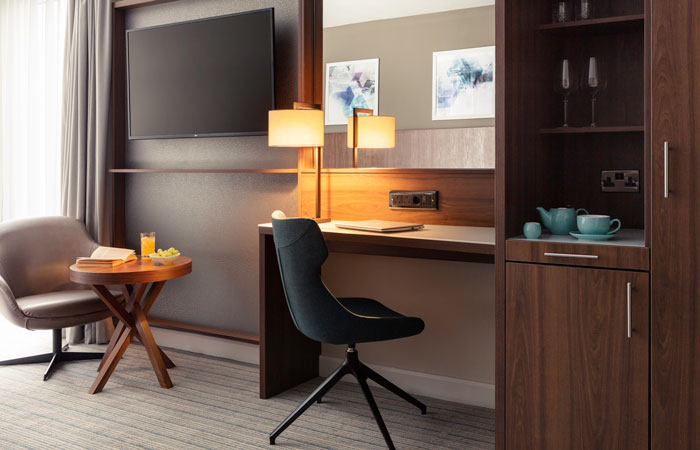
Courtyard by Marriott, Gatwick
Hotel rooms are having to become an environment that caters for the guest beyond the night, with hoteliers now also looking at what their guests require from a space during the day and evening, and for extended stays. Features such as larger wardrobes, comfortable lounging furniture, and kitchens.
Often with only a small amount of additional space, but with effective use of lighting and screening, hotels are providing a relaxing sitting area from which the guest can either watch TV or work. Often this takes the form of a sofa bed to add further flexibility and family living, or a large easy chair and footstool.
Likewise, improvements in wi-fi coverage, diminishing laptop sizes, and not least, the demise of the pen and paper, mean the traditional writing desk is becoming smaller and more mobile, with handles for lifting and moving around the room. This is often substituted completely for a laptop table which can easily be positioned anywhere in the room.
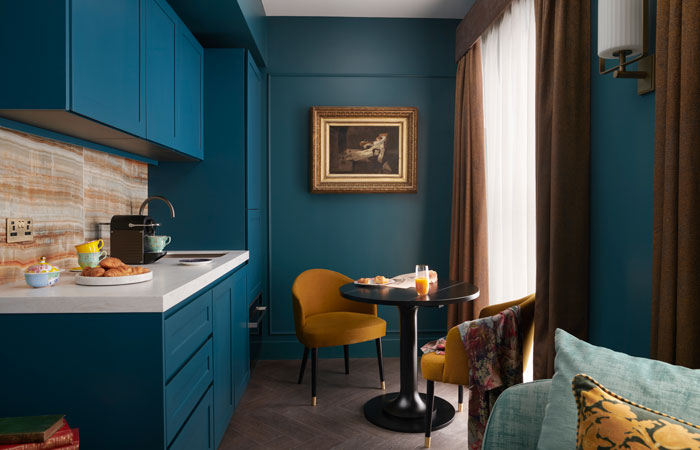
The Other House, London
The final element in tempting guests into longer visits and the feeling that they are literally in a home from home, and not obliged to fork out on eating out every night, is the kitchen, and given space, this is increasingly being incorporated into the bedroom. These kitchens typically include a sink, fridge, microwave oven and hob as the minimum. Some also feature dishwashers and conventional ovens.
A well designed, and independently lit, hotel bedroom kitchen complements the aesthetic of the bedroom furniture while providing its own (ventilated) environment to prepare anything from a cappuccino to egg and cheese on toast (my favourite!). This area, perhaps more than any other in a hotel bedroom, even the en-suite, must provide function as well as form.
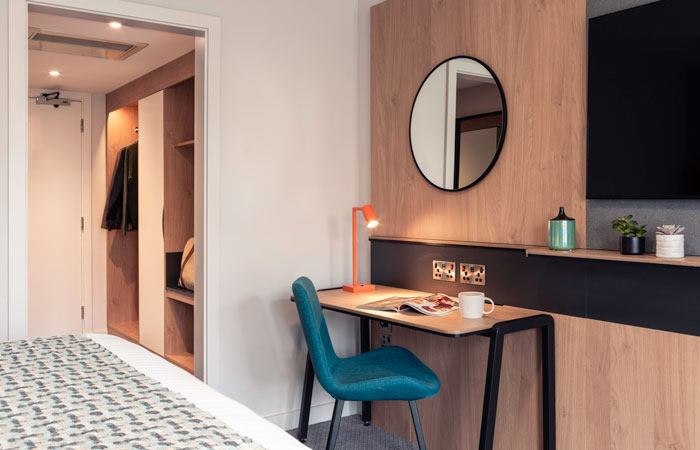
Holiday-Inn, Bexley
Guests wanting to spend more time in their room need space that has to satisfy multiple requirements, and this means effective lighting is more essential than ever.
The challenge for interior designers and manufacturers is to provide different levels of ambience to suite the mood – the guest needs the appropriate lighting levels and atmospheres to relax, to cook and to work, without spending their stay looking for the right light switch.
In many cases, the furniture is now having to be designed to incorporate the lighting and power systems, which requires a closer collaboration between case good manufacturers and M&E providers.
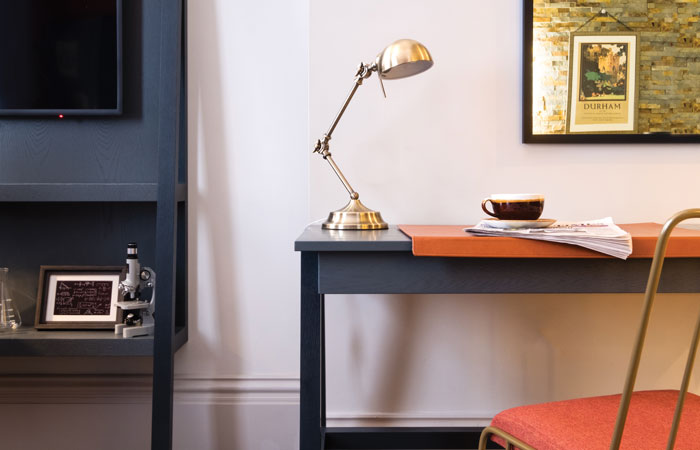
Hotel Indigo, Durham
So, as a hotel bedroom becomes more multi-functional, its planning and manufacture become even more challenging. Perhaps that is why experienced hotel furniture manufacturers are being called on by interior designers to become involved sooner in the design of these spaces, and why contractors and specifiers are increasingly looking for suppliers who can offer expertise in all of the new requirements – relaxed seating, screening, and kitchens and integrated appliances.
This increasingly collaborative process can be eased when all of these types of hotel furniture are prototyped and manufactured in the UK, which also helps on the sustainability front by reducing “furniture miles” and carbon emissions compared with shipping from Europe or Asia.
In addition, this close collaboration becomes even more coveted in the particularly challenging conversion of period properties which often require more site visits by the design and manufacturing team than new-build projects.
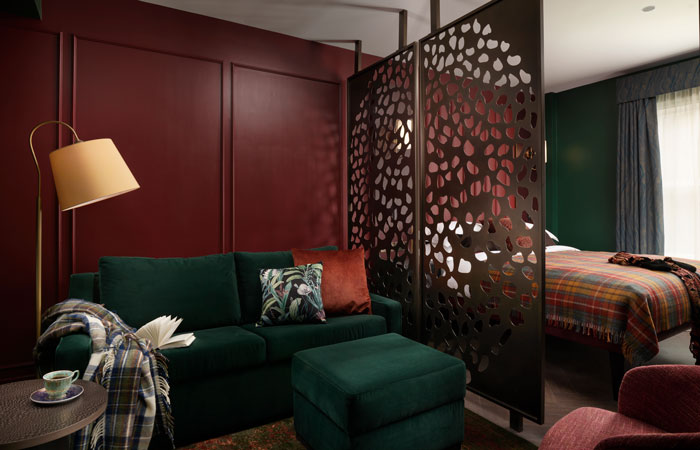
The Other House, London
For example, the first The Other House in South Kensington has been redeveloped from 11 historic townhouses, and the first West London Locke, also in Kensington, retains its original Victorian features including arched windows and sloping eaves, the latter requiring a bespoke kitchen design.
Developers are also looking at converting unused period office buildings to aparthotels instead of the more traditional apartment route, where the existing features, fabric, facilities and footprint make the evolution of the traditional hotel bedroom even more challenging for the design and manufacturing team.
Contact Curtis through Product Finder
Product Finder enables Commercial Interior Designers to source products and services from accredited Commercial Suppliers. Search through over 200 UK suppliers, each showcasing newly launched products, projects, catalogues, films, sector research and much more.




